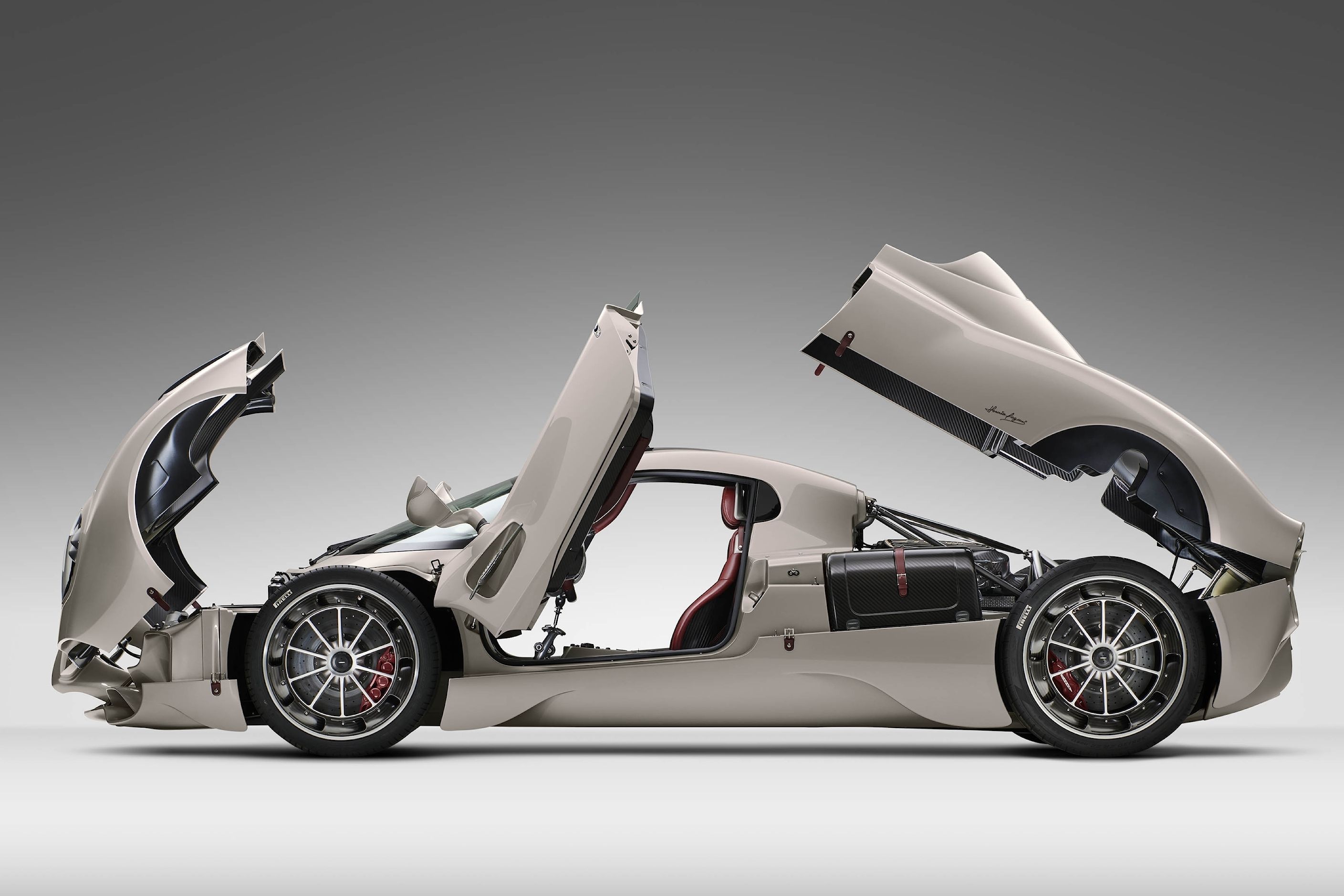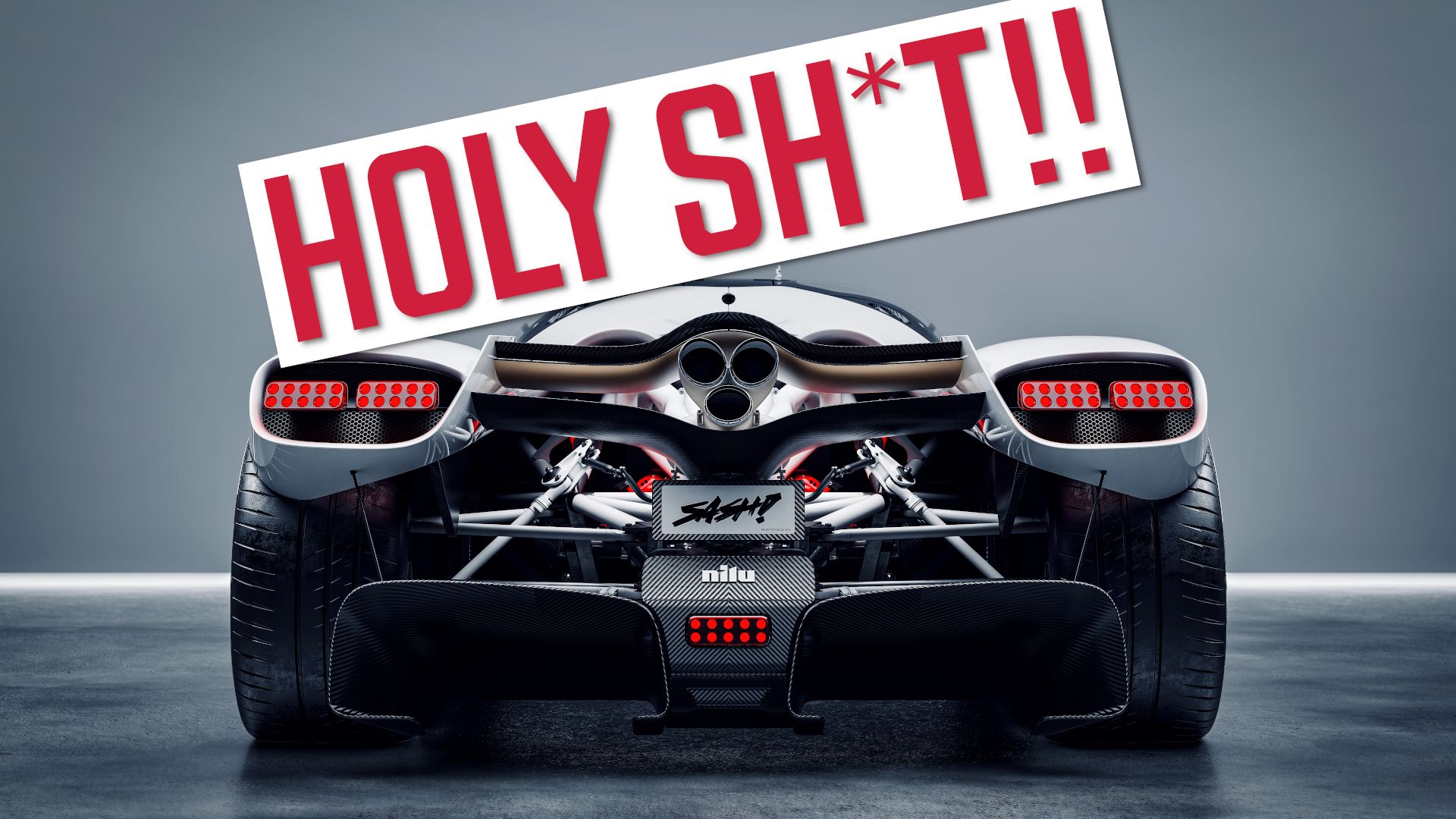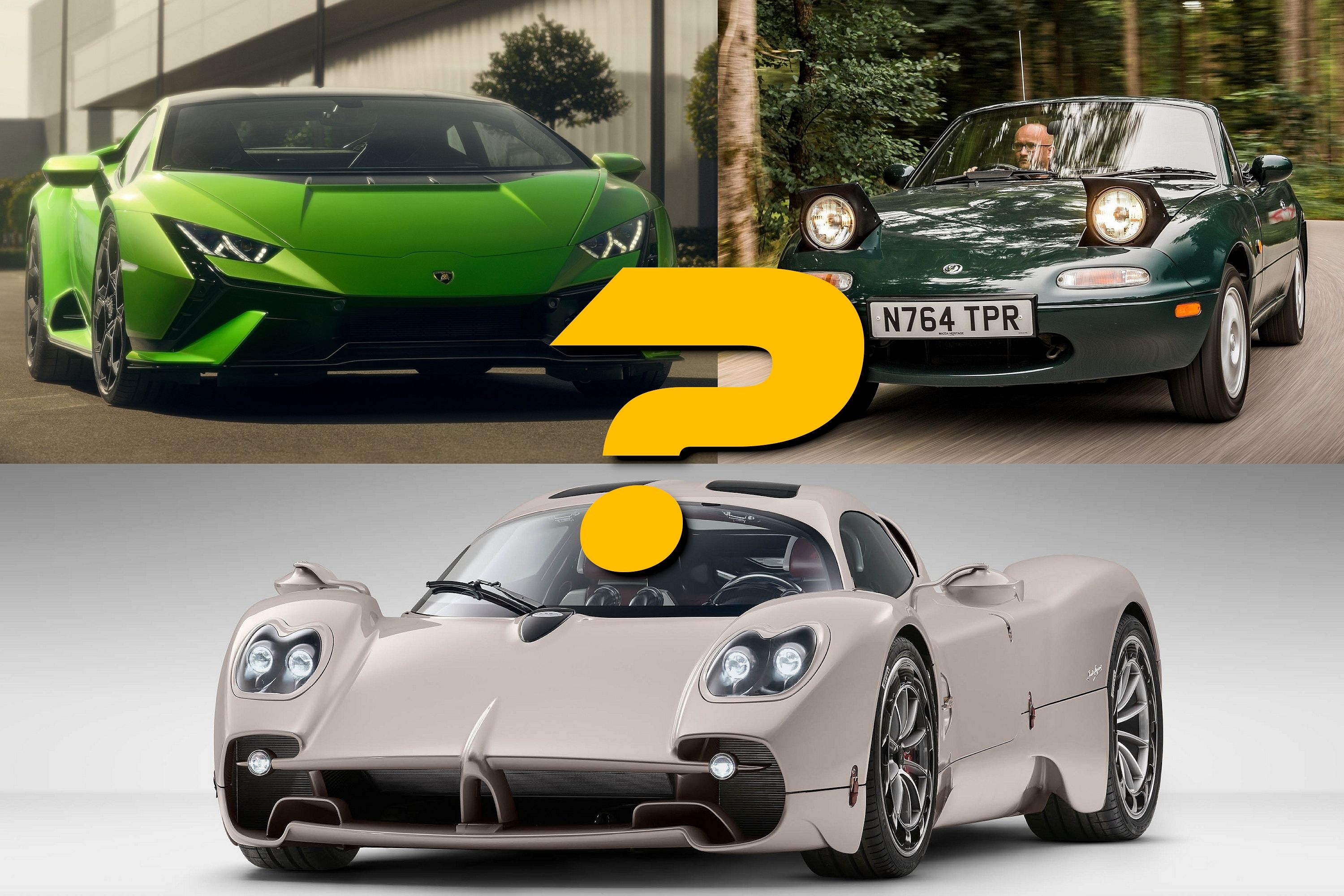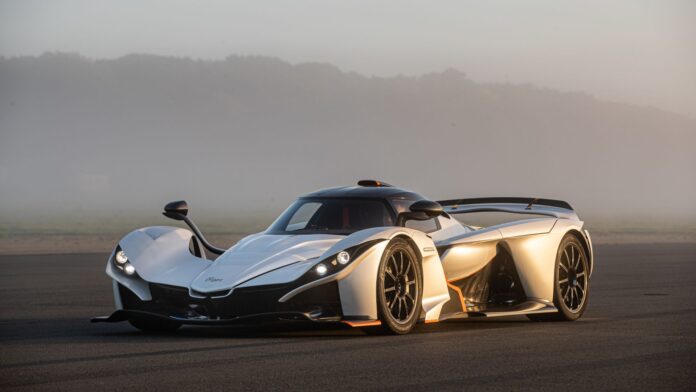Ahead of the unveiling of the first Bohema customer car next week, we spoke with Mark Harrison, Managing Director of Praga Cars UK, to learn more about the company and what to expect from it in the future. If you read part 1 of our discussion, you’ll know that Praga is offering an Aston Martin Valkyrie experience without any of the headaches that come with such a complex machine. Thanks in part to the use of a Nissan GT-R engine modified and enhanced by Litchfield, Praga has been able to deliver extraordinary performance in a package that can be enjoyed daily, but what is the Bohema truly capable of, and what happens at the end of the decade when emissions regulations get tighter?
Lap Record Attempts Could Happen
We asked about the Bohema stamping its authority on some circuits. Harrison says that “at this stage,” the enormous expense of hiring out Silverstone or somewhere similar (several dozens of thousands of dollars per day) is not worth the expenditure. Praga would much rather put that money “into the continued development of the car, and the production processes, and fine-tuning with the paint supplier and all those sorts of things.” He admits that places like Silverstone and the Nürburgring would be ideal locations to make a statement, but as Ford learned with the Mustang GTD, bad weather can strike at any time, and then that money must just be written off.
“We’ve never had a day yet where we’ve spent a whole day trying to break a lap record, but we’ve been to one or two tracks where we know if we went for the whole day and the weather was perfect, [and the] temperature was perfect, we would set lap records.”
– Mark Harrison, Managing Director, Praga Cars UK.

Add CarBuzz to your Google News feed.
Aston Martin has easier access to Silverstone (where the Valkyrie recently shattered the lap record), for example, while Porsche has easier access to the Nordschleife. The German circuit’s length might give thousand-horsepower cars an edge, but “on a normal racetrack,” the Praga team believes it will “be as fast as anything out there.” Harrison continues, “There are some tracks that are far less expensive to go to, closer to Prague and [the] Czech Republic, where setting a lap means something.” BRNO Circuit springs to mind, but any records will likely be a fortunate side effect of testing, not a target.
Electrification Not On The Cards, But More Power And Less Weight Might Be
Praga chose the GT-R engine because of reliability and aftermarket development, but also because other options on the table “just come in a box.” Nissan’s relationship with Litchfield is far more meaningful, with real support, plenty of cross-pollination of ideas, and the guarantee of future supply. As a low-volume manufacturer, Praga has no worries about incoming Euro 7 regulations, so don’t expect a hybrid any time soon. Harrison tells us that production of US cars is likely to be completed around 2026, with all cars out the door somewhere around 2028.
“The worst thing to do would be to build too many cars too quickly,” he says, something that McLaren learned the hard way. Since we are a greedy, unsatisfied, and predictable bunch, Harrison knew that despite all the talk of intentionally slow and precise development and production programs, we’d want to hear what’s next and we’re sure you do, too.

Related
Pagani Still Thinks Electric Supercars Are Too Heavy
The boutique brand says an electric Pagani must be light, but current EV technology is making that difficult.
We asked if there might be a special edition to celebrate the marque’s 120th anniversary in 2027, and he half-jokingly said that Praga should “take 120 kilos out of the car, add 120 horsepower.” The VR38 engine can take ridiculous abuse (though customers who choose to tune the current car, even through Litchfield, will lose their warranty), and the existing aero package can handle at least 800 hp. Harrison said several of Praga’s customers are very aware of the history of the brand, so “undoubtedly, we’ll look at something like that.” Praga has ideas about what sort of cars might come after, but there’s no point discussing them now when the future is uncertain.
Praga Will Expand Activities, But Only When The Time Is Right
Former F1 driver and friend of Praga Romain Grosjean helped plant the seed for the Bohema road car, telling company founder Petr Ptáček that there were no true race cars for the road, only road cars with varying levels of track bias. That guiding principle, of bringing otherworldly track performance to a package that can still be genuinely enjoyed on a daily basis, is the Bohema’s USP. But striking that balance has not been easy, hence Harrison’s reticence about future products.
Praga struggled to get the Bohema approved for current Show or Display import rules, which have become stricter in recent years. Altering that foundation will be a challenge that can only be faced with the knowledge of what the future holds, and that’s impossible. Still, Praga is using a lawyer to explore Individual Type Approvals to allow greater use of the car in America.

Related
The Era Of The “Holy S**” Hypercar Has Returned
Nilu27 is a hypercar company from the mind of the designer of some of the most iconic modern-day supercars. But his first car will be something wild.
What about video games? Praga has been featured in titles like Asphalt on the arcade side and RaceRoom on the sim side. Harrison said Praga has had those discussions, with plenty of entities looking to include Praga’s road car in the digital world, but all such discussions are effectively “on hold until the car’s finished.” Ironically, Praga’s growing reputation for ridiculously fast cars is being cemented because it builds them slowly. Yet, thanks to there being several other arms to Praga’s small business, it’s well-funded and can adapt to new challenges relatively well.
The Hypercar Bargain Of The Century?
Whatever comes next, Praga is obsessed with perfecting the hypercar experience, distilling it to the most engaging fundamentals possible, and delivering it without any powertrain failures, recalls, fitment issues, paint imperfections, or ownership headaches. This is shaping up to be a machine that is as exciting and emotional as an Aston while remaining as easy to drive and maintain as a Nissan. We can’t wait to see what customers choose in terms of paint and interiors in the coming months, but we already know that at least one early customer has asked for the very difficult and very expensive option of a naked carbon fiber finish, and Praga has accommodated the request, along with a wide range of other bespoke and varied finishes for other customers.

Related
What’s The Difference Between A Sports Car, A Supercar, And A Hypercar?
Is it even possible to define these concepts?
Indeed, this is an elite hypercar, but you don’t need to be a racing driver, go deaf, transport the car with a trailer, fund a massive support crew, or wait five years to experience it. You just need around $1.4 million – and to pull the trigger before all 89 sell out. That probably won’t take too long; this is rarer than a Valkyrie, cheaper than a Valkyrie, and more usable than a Valkyrie. I’m off to see a doctor to ask how much I really need that second kidney.

